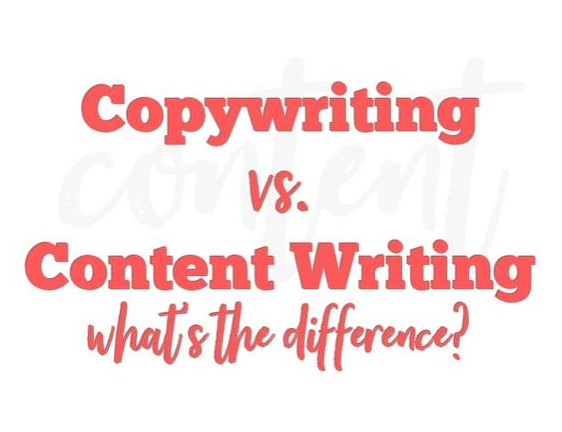Copywriting VS Content Writing: Unveiling the Key Differences

Are you confused about the differences between copywriting and content writing? You’re not alone. Many people mistakenly use these terms interchangeably, but the truth is, they have distinct purposes and goals. Copywriting and content writing serve different functions within the realm of marketing and communication.
Understanding the purpose of copywriting
Copywriting is all about persuading the audience to take action. It’s the art of crafting compelling and persuasive messages that drive conversions. Think of copywriting as the strategic way to sell products or services. The primary goal of copywriting is to create content that motivates readers to make a purchase, sign up for a newsletter, or take any other desired action.
Copywriters use various techniques to grab attention and create a sense of urgency, such as writing catchy headlines, using power words, and incorporating persuasive calls-to-action. They focus on highlighting the unique selling points of a product or service and emphasizing the benefits customers can gain. Copywriting requires a deep understanding of the target audience, their pain points, and their motivations.
Copywriters often work closely with marketers to develop compelling advertising campaigns, sales pages, landing pages, email marketing campaigns, and other promotional materials. They have the skills to create engaging content that not only grabs attention but also convinces readers to take the desired action.
Understanding the purpose of content writing
On the other hand, content writing is focused on providing valuable and informative content that educates and engages the target audience. It aims to build brand awareness, establish credibility, and nurture relationships with potential customers. Content writers create content that is not explicitly promotional but serves to inform, entertain, or inspire the audience.
Content writing can take various forms, including blog articles, social media posts, whitepapers, e-books, videos, podcasts, and more. The primary goal of content writing is to deliver valuable information that solves problems, answers questions, and provides insights. By providing valuable content, brands can build trust and position themselves as industry authorities.
Content writers conduct thorough research to understand the target audience and their informational needs. They use storytelling techniques, data, examples, and relatable anecdotes to engage the readers and keep them coming back for more. The content they create is designed to provide value and establish a long-term relationship with the audience.

Key differences between copywriting and content writing
While both copywriting and content writing share the goal of attracting attention, they require different writing styles and approaches. Copywriting demands more creativity, emphasizing catchy headlines, persuasive calls-to-action, and benefit-driven content. The language used in copywriting is often more direct and sales focused.
Content writing, on the other hand, focuses on delivering valuable information, building trust, and establishing the brand as an authority in the industry. It requires a more informative and conversational tone. Content writing is about building a long-term relationship with the audience, rather than making an immediate sale.
Another key difference between copywriting and content writing is the intended outcome. Copywriting aims to drive specific actions, such as making a purchase or filling out a form, while content writing aims to provide value and engage the audience without a direct sales pitch.

Copywriting techniques for persuasive messaging
Copywriting requires a set of specific techniques to craft persuasive messages. Here are some key techniques for copywriting:
01. Catchy headlines: A compelling headline grabs attention and entices the reader to continue reading. It should be concise, engaging, and clearly convey the main benefit or value proposition.
02. Power words: Certain words have a strong emotional impact and can influence readers’ decisions. Copywriters strategically incorporate power words to evoke specific emotions and create a sense of urgency.
03. Call-to-action: A persuasive call-to-action prompts readers to take the desired action. It should be clear, action-oriented, and compelling. Copywriters often experiment with different CTAs to optimize conversion rates.
04. Benefit-driven content: Copywriters focus on highlighting the benefits customers can gain by using a product or service. They emphasize how the product or service can solve problems, save time, or improve the reader’s life in some way.
By utilizing these techniques, copywriters can create compelling content that drives conversions and motivates readers to take action.
Content writing techniques for informative and engaging content
Content writing requires a different set of techniques to create informative and engaging content. Here are some key techniques used by content writers:
- Thorough research: Content writers conduct in-depth research to gather accurate and up-to-date information. They rely on reputable sources, statistics, studies, and expert opinions to ensure the content is reliable and valuable.
- Storytelling: Content writers use storytelling techniques to captivate readers and make the content more relatable. They weave narratives, share personal experiences, or use case studies to engage the audience and provide a memorable reading experience.
- Data and examples: Incorporating data and real-life examples adds credibility and makes the content more informative. Content writers use data to support their arguments and provide tangible evidence to back up their claims.
- Conversational tone: Content writing often adopts a conversational tone to connect with the audience. It feels more approachable and less sales-oriented. Content writers aim to create content that readers can easily understand and relate to.
By implementing these techniques, content writers can create valuable and engaging content that resonates with the target audience.
The importance of tone and voice in copywriting and content writing
Both copywriting and content writing require careful consideration of tone and voice. Tone refers to the attitude or emotion conveyed in the writing, while voice refers to the unique personality and style of the brand.
In copywriting, the tone is often more persuasive, energetic, and focused on driving action. The language used is direct and concise, aiming to create a sense of urgency and motivate readers to take immediate action.
In content writing, the tone is more informative, conversational, and focused on building a connection with the audience. Content writers aim to provide value, answer questions, and establish the brand as a trusted source of information. The language used is more relaxed and relatable.
Maintaining a consistent tone and voice across all marketing materials is essential for building brand identity and establishing trust with the audience.
How to choose between copywriting and content writing for your business
Choosing between copywriting and content writing depends on your specific goals and marketing objectives.
If your primary goal is to drive immediate action, such as making a sale or generating leads, copywriting is the way to go. Copywriting is effective for creating persuasive landing pages, sales emails, and social media advertisements that directly prompt readers to take action.
On the other hand, if your goal is to build brand awareness, establish credibility, and engage with your audience over the long term, content writing is the ideal choice. Content writing allows you to create valuable blog articles, social media posts, and videos that provide information and build relationships with your target audience.
It’s important to note that both copywriting and content writing have their place in a comprehensive marketing strategy. Depending on your business needs, you may choose to incorporate both approaches to maximize your marketing efforts.
Conclusion
In conclusion, copywriting and content writing are two distinct forms of writing that serve different purposes within the realm of marketing and communication. Copywriting focuses on persuasive messaging and driving immediate action, while content writing aims to provide valuable information and engage the audience over the long term.
Understanding the key differences between copywriting and content writing is crucial for a successful marketing strategy. By leveraging the power of both approaches, you can create a comprehensive marketing campaign that drives conversions, establishes brand authority, and nurtures relationships with your target audience.
So, whether you need to create compelling sales copy or informative and engaging content, remember the unique strengths of copywriting and content writing and choose the approach that aligns with your marketing goals.
So, what are you waiting for? Start incorporating both copywriting and content writing into your marketing efforts to see significant results?

